There can be your advertisement
300x150
Le Corbusier: 30 Best Photographs
See a collection of photo portraits of the famous architect who became renowned for his revolutionary ideas and stylish eyeglasses
The emergence of modern urban development is largely due to the architect Charles-Édouard Jeanneret-Gris. In the 1920s, he introduced free planning, invented "standing" houses on reinforced concrete pillars to use space under buildings for car parking, and proposed a more relevant alternative to traditional sloped roofs with attics—flat roofs or terraces with gardens or spaces for relaxation.
Today, the architect is considered a pioneer of modernism and constructivism, although his ideas were once seen as too bold. To share these with the world, in 1919, Charles-Édouard began publishing the journal L'Esprit Nouveau with a friend and started signing his articles under the pseudonym Le Corbusier.
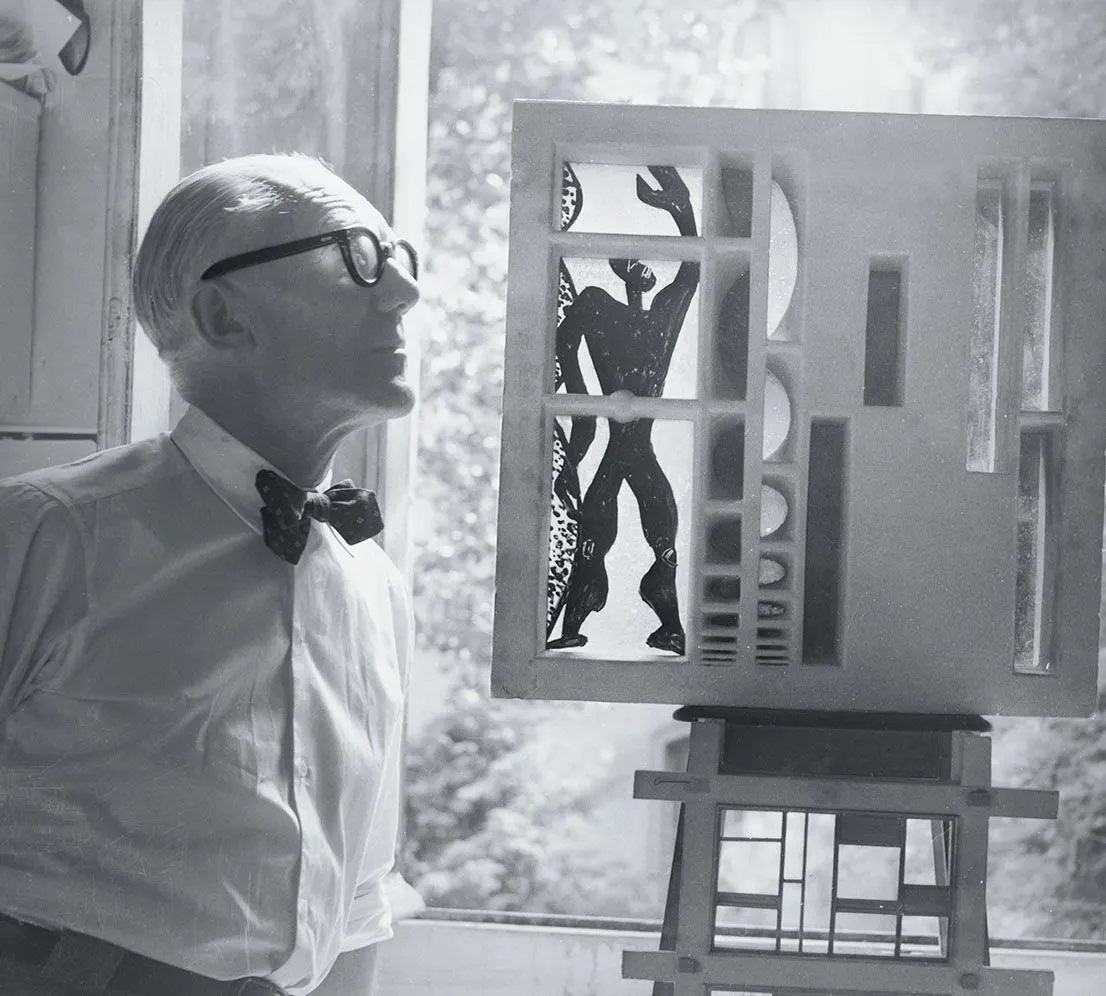 At 13, the future architect went to study as a watchmaker—his father's profession—but interest in architecture and painting proved stronger. "I am drawn to places where people live naturally,"—Le Corbusier wrote to his mother. On the photo, the architect is relaxing with his cousin at Arcachon Bay on the southwest coast of France. 1928. Le Corbusier inspects construction of the monastery complex at La Tourette in Lyon—his final project. The architect designed the monastery minimalist, using rough gray concrete. 1959 year.
At 13, the future architect went to study as a watchmaker—his father's profession—but interest in architecture and painting proved stronger. "I am drawn to places where people live naturally,"—Le Corbusier wrote to his mother. On the photo, the architect is relaxing with his cousin at Arcachon Bay on the southwest coast of France. 1928. Le Corbusier inspects construction of the monastery complex at La Tourette in Lyon—his final project. The architect designed the monastery minimalist, using rough gray concrete. 1959 year."Architecture is my wife, and painting is my lover,"—Le Corbusier claimed. With his "earthly" wife, Ivonne Galli, the architect met in Paris in 1922. On the photo, the couple is on the balcony of their apartment at 24 rue Nungesser et Coli in Paris. The architect is at his favorite "hermit's house," or Le Cabanon, a 15 square-meter cabin designed by him in Rocbeure-Cap-Martin on the French Riviera. His first architectural project—a house for a member of the board at the school of arts where he studied—was realized by Le Corbusier at age 17 in collaboration with his teacher. In 1925, the architect developed the bold "Plan Voisin." He proposed demolishing central Paris, leaving only recognizable buildings like the Eiffel Tower, and building a new city according to his vision. There was a period in the architect's life when he fully focused on painting. On the photo, Le Corbusier with Pablo Picasso, who shared his artistic tastes. Main ideas of Le Corbusier's projects—plan the city comfortably, create green zones and modern road systems. Le Corbusier with his wife Ivonne Galli. Buildings designed by the architect were built in Switzerland, France, Germany, USA, Argentina, Japan, India, Brazil and even Russia. This is the Central Union building on Mezhyozhorskaya Street in Moscow. The architect in the lens of the famous photographer Willy Rizzo, who once photographed Marilyn Monroe and Winston Churchill. On the photo, Le Corbusier in his studio apartment at 24 rue Nungesser et Coli in Paris. 1953. "To be modern is not fashion, it's a state,"—Le Corbusier believed. "Each of us must accept the conditions in which he lives, and adaptation to them is his duty, not choice." A strict dark suit, a bow tie, and round-rimmed glasses—Le Corbusier's appearance became as recognizable as his architectural style.
 Le Corbusier and his 'La ville radieuse' ('Radiant City')—a grand but unrealized urban planning project, which was based on symmetrical layouts, skyscrapers, open space, light, and greenery. Some of the project's ideas were later applied in the construction of the famous Marseille Unit and urban development in Chandigarh, India. The architect claimed he preferred to draw rather than talk: "Drawing is faster and leaves less room for lies." "Architecture is circulation,"—Le Corbusier said, planning many windows for his buildings, ensuring an abundance of light and air. In the design of the Villa Savoye in Pauillac, Le Corbusier applied all five principles he formulated for modern architecture. On the photo, the architect in his office in Paris, 1946. Le Corbusier left behind approximately 40 books and hundreds of articles, which are today equated to the architectural Bible. "A house is a machine for living,"—Le Corbusier believed. He emphasized functionality and created the Modulor system, mathematically calculated from human body dimensions. His passion for painting resulted in numerous canvases in the purism genre, principles of which Le Corbusier developed together with his friend, artist Amédée Ozenfant. Regarding the use of concrete: "Exposed concrete reveals even the smallest details of formwork, joints between planks, fibers, wood knots and more... But do you not notice wrinkles or birthmarks, crooked noses, countless quirks in men and women... Defects are human; they are us, our daily life." Le Corbusier believed that the interior of a house should correspond to the appearance of the building. Le Corbusier in his studio at 35 Rue de Sèvres in Paris in 1924. Together with furniture designer Charlotte Perriand, he created a series of minimalist furniture made from bent steel tubes and leather. Le Corbusier on self-criticism: "I don't consider myself a great personality. I feel like I'm waking up every morning as a fool and trying to shake off that image all day long." Le Corbusier is an honorary doctor of Cambridge University. The wooden statue Femme, created by Le Corbusier in collaboration with cabinetmaker Joseph Sainet based on themes from the architect's paintings, was sold at Christie's auction in Zurich for 3.1 million Swiss Francs (3.3 million US dollars).
Le Corbusier and his 'La ville radieuse' ('Radiant City')—a grand but unrealized urban planning project, which was based on symmetrical layouts, skyscrapers, open space, light, and greenery. Some of the project's ideas were later applied in the construction of the famous Marseille Unit and urban development in Chandigarh, India. The architect claimed he preferred to draw rather than talk: "Drawing is faster and leaves less room for lies." "Architecture is circulation,"—Le Corbusier said, planning many windows for his buildings, ensuring an abundance of light and air. In the design of the Villa Savoye in Pauillac, Le Corbusier applied all five principles he formulated for modern architecture. On the photo, the architect in his office in Paris, 1946. Le Corbusier left behind approximately 40 books and hundreds of articles, which are today equated to the architectural Bible. "A house is a machine for living,"—Le Corbusier believed. He emphasized functionality and created the Modulor system, mathematically calculated from human body dimensions. His passion for painting resulted in numerous canvases in the purism genre, principles of which Le Corbusier developed together with his friend, artist Amédée Ozenfant. Regarding the use of concrete: "Exposed concrete reveals even the smallest details of formwork, joints between planks, fibers, wood knots and more... But do you not notice wrinkles or birthmarks, crooked noses, countless quirks in men and women... Defects are human; they are us, our daily life." Le Corbusier believed that the interior of a house should correspond to the appearance of the building. Le Corbusier in his studio at 35 Rue de Sèvres in Paris in 1924. Together with furniture designer Charlotte Perriand, he created a series of minimalist furniture made from bent steel tubes and leather. Le Corbusier on self-criticism: "I don't consider myself a great personality. I feel like I'm waking up every morning as a fool and trying to shake off that image all day long." Le Corbusier is an honorary doctor of Cambridge University. The wooden statue Femme, created by Le Corbusier in collaboration with cabinetmaker Joseph Sainet based on themes from the architect's paintings, was sold at Christie's auction in Zurich for 3.1 million Swiss Francs (3.3 million US dollars).Architect with a model of the Church of Saint Peter in Firminy. The project was started and frozen several times, only completing in 2006. Today, the church is a monument of modern global architecture. "The history of architecture is the history of windows with walls,"—the architect believed. In his Paris studio, 1920.
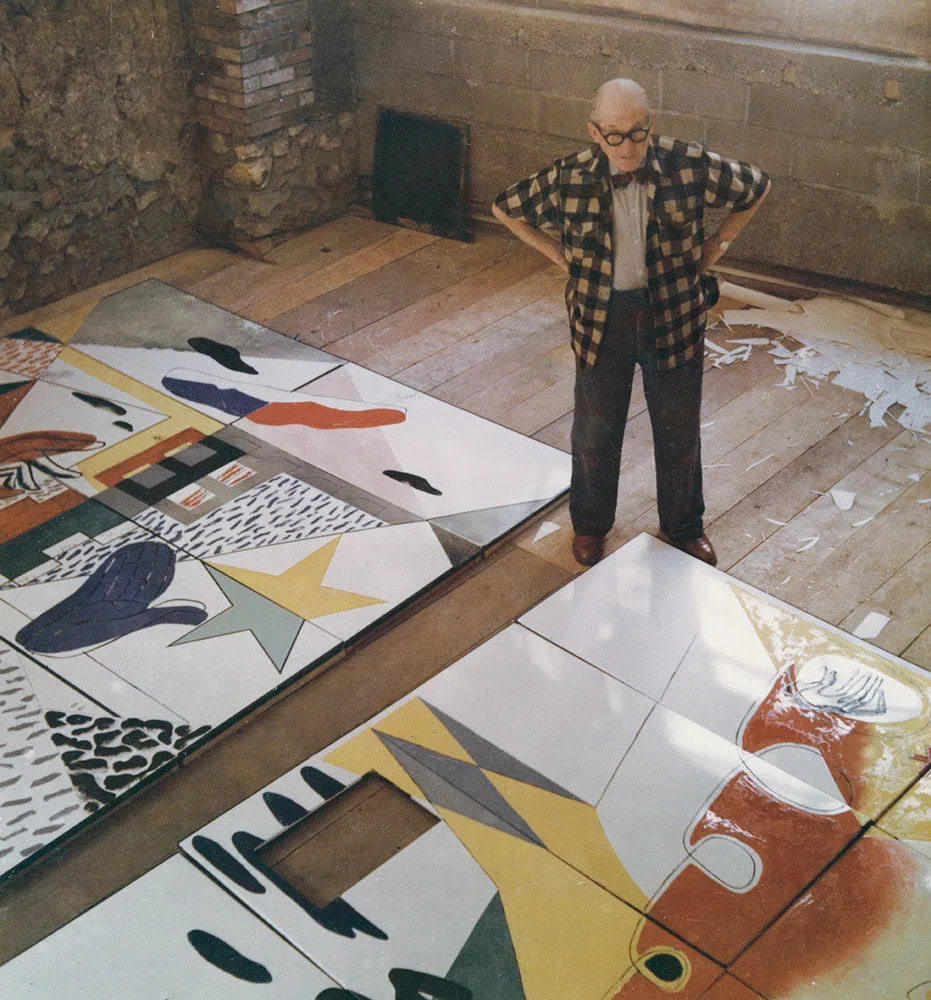 Le Corbusier: "Everything around us is geometry!" On the photo, the architect paints enamel doors for the chapel of Notre-Dame-du-Port in his workshop in Paris. 1955.
Le Corbusier: "Everything around us is geometry!" On the photo, the architect paints enamel doors for the chapel of Notre-Dame-du-Port in his workshop in Paris. 1955.More articles:
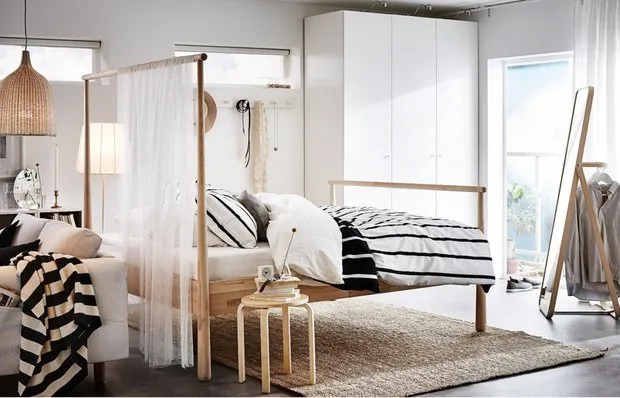 IKEA Sale Week: What to Buy?
IKEA Sale Week: What to Buy?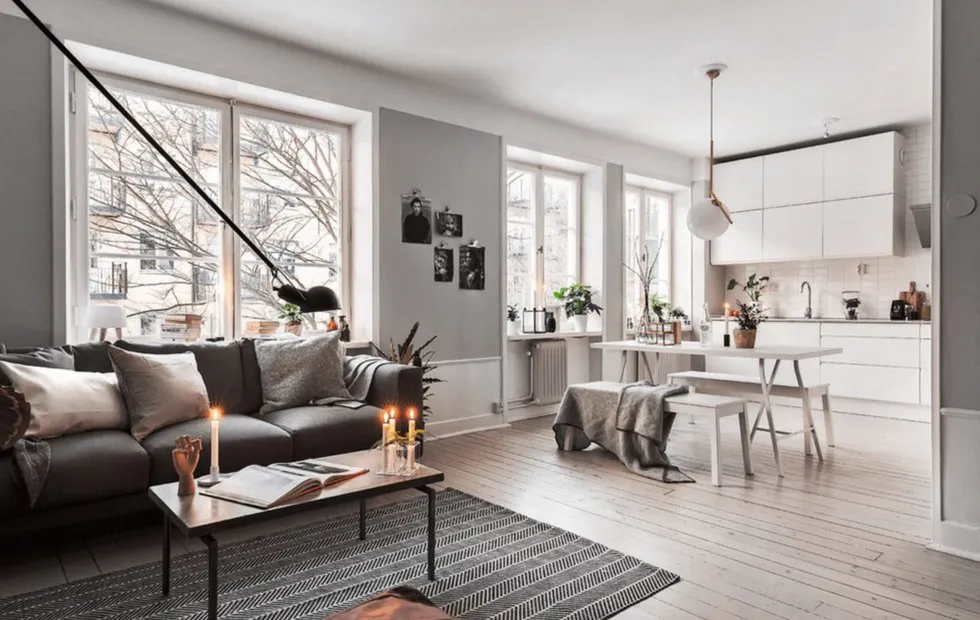 How to Decorate an Interior in the Hygge Style
How to Decorate an Interior in the Hygge Style How to Avoid Mistakes When Choosing a Foreman for Apartment Renovation
How to Avoid Mistakes When Choosing a Foreman for Apartment Renovation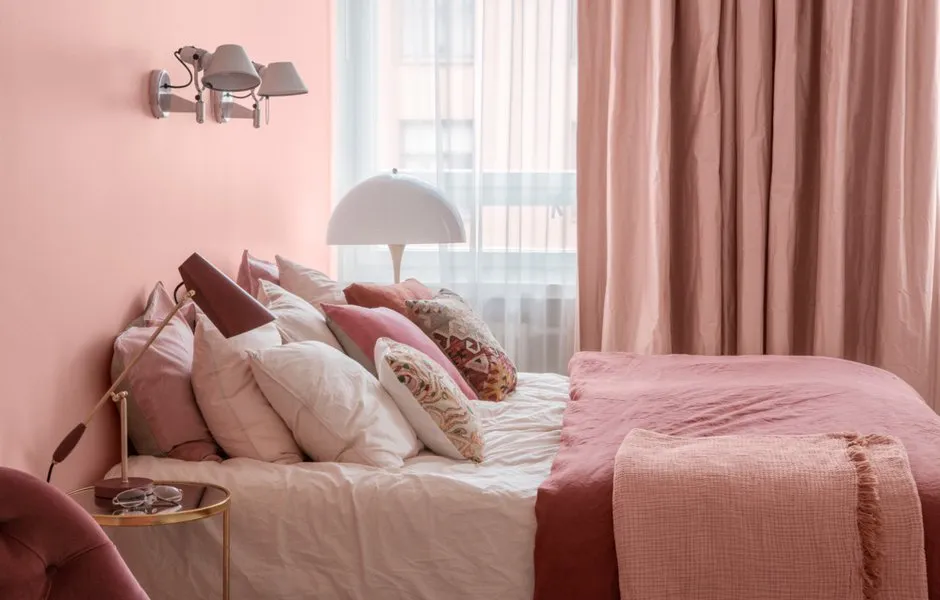 Pink Color in Interior Design: Bright Examples and Designers' Tips
Pink Color in Interior Design: Bright Examples and Designers' Tips Guide: 7 Apartments in Pastel Tones
Guide: 7 Apartments in Pastel Tones 4 Reasons Why a Designer Might Reject a Project
4 Reasons Why a Designer Might Reject a Project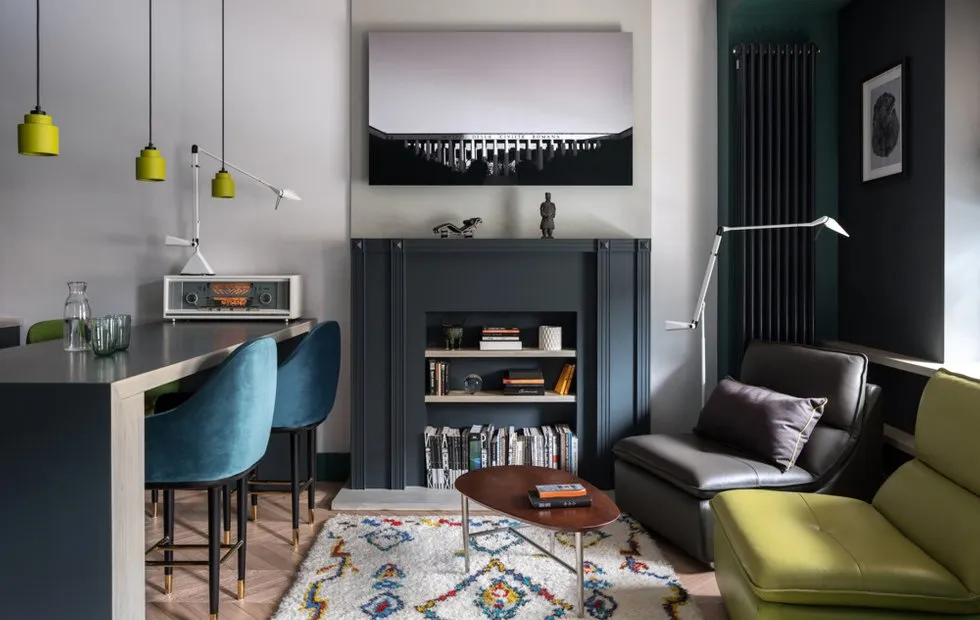 6 Color Solutions for Small Apartments
6 Color Solutions for Small Apartments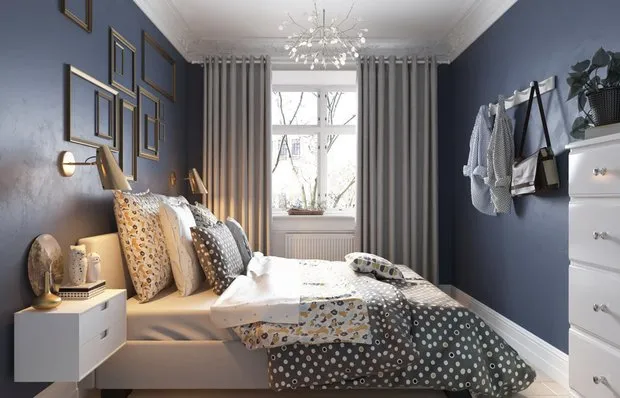 14 Design Hacks That Will Improve Your Interior
14 Design Hacks That Will Improve Your Interior